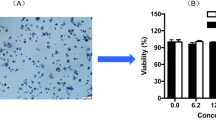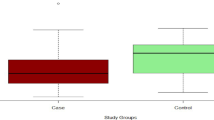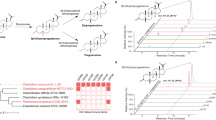Abstract
6β-Hydroxy-3,5-cycloandrostan-17-one is related to the naturally occurring steroid dehydroepiandrosterone in that it can be readily converted to dehydroepiandrosterone under acidic conditions and can be produced by hydrolysis of solutions of dehydroepiandrosterone sulphate at elevated temperatures at neutral pH1. In addition it has been suggested that the 3,5-cyclosteroids have an ‘anti-fatigue’ effect2. For these reasons it seemed of interest to examine the metabolism of this steroid.
This is a preview of subscription content, access via your institution
Access options
Subscribe to this journal
Receive 51 print issues and online access
$199.00 per year
only $3.90 per issue
Buy this article
- Purchase on SpringerLink
- Instant access to full article PDF
Prices may be subject to local taxes which are calculated during checkout
Similar content being viewed by others
References
Lieberman, S., Mond, B., and Smyles, E., Recent Prog. Hormone Res., 9, 113 (1954).
Hardwick, S. W., Pearse, J. S., and Petrow, V., J. Ment. Sci., 103, 835 (1957).
Brooks, R. V., Biochem. J., 68, 50 (1958).
Butenandt, A., and Suranyi, L. O., Ber. Deutsch. Chem. Ges., 75, 591 (1942).
Breuer, H., Vitam. and Horm., 20, 285 (1962).
Hagopian, H., Pincus, G., Carlo, J., and Romanoff, E. B., Endocrinology, 58, 287 (1956).
Author information
Authors and Affiliations
Rights and permissions
About this article
Cite this article
DAVIDSON, D., FOTHERBY, K. Metabolism of 6β-Hydroxy-3,5-cycloandrostan-17-one by Rabbit Liver in vitro. Nature 206, 933 (1965). https://doi.org/10.1038/206933a0
Issue date:
DOI: https://doi.org/10.1038/206933a0



